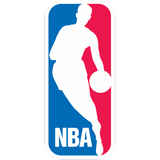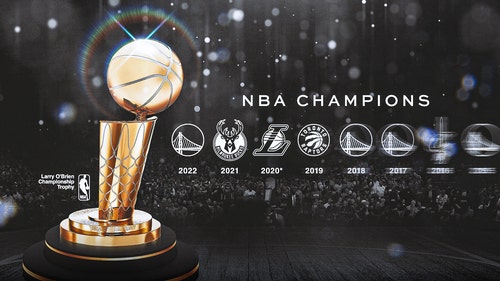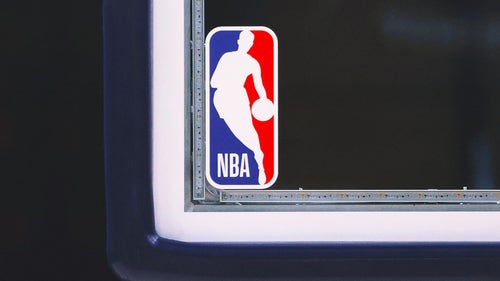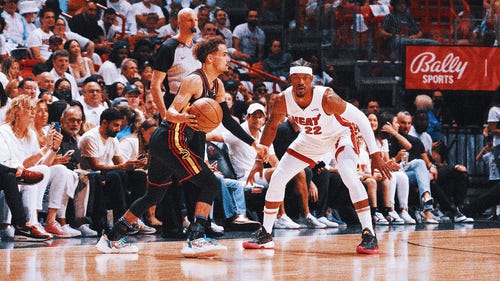
Utah Jazz: 2017 NBA Draft grades

Jun 22, 2017; Brooklyn, NY, USA; Donovan Mitchell (Louisville) is introduced by NBA commissioner Adam Silver as the number thirteen overall pick to the Denver Nuggets in the first round of the 2017 NBA Draft at Barclays Center. Mandatory Credit: Brad Penner-USA TODAY Sports
The Utah Jazz had an opportunity to add some talent to their roster on draft night. Here's how their three selections in the 2017 NBA Draft graded out.
After several years spent adding young talent and major pieces, the Utah Jazz came into the 2017 NBA Draft in an unfamiliar position, having two late first-round picks at No. 24 and No. 30 in addition to their two second round selections.
However, having multiple picks was not unfamiliar territory for Utah, as they've had at least three picks every year since 2013. With a lot of established players already on the roster, it became clear early on that the Jazz would likely need to consolidate assets, as we'll get into later.
The franchise is facing an unknown offseason in which many key pieces, most importantly Gordon Hayward, will be up for grabs in free agency. This can make it hard to plan for a draft from the front office's perspective, as they can't focus exclusively on developmental pieces or win-now mature players.
There is, of course, value to be had in later picks, as Jazz fans should be aware of considering they have unearthed gems such as Rudy Gobert with picks in the 20s.
Now, let's examine how the Jazz did with each of their three picks, including ability, fit and what that particular selection means for the franchise moving forward.

Jun 22, 2017; Brooklyn, NY, USA; Donovan Mitchell (Louisville) is interviewed after being introduced as the number thirteen overall pick to the Denver Nuggets in the first round of the 2017 NBA Draft at Barclays Center. Mandatory Credit: Brad Penner-USA TODAY Sports
No. 13 — Donovan Mitchell
In the midst of a night with many deals being made, the Jazz threw their hat into the ring when they packaged their No. 24 pick and Trey Lyles to move up to the 13th selection, which had belonged to the Denver Nuggets.
With that pick, they got University of Louisville combo guard Donovan Mitchell, a sophomore who averaged 15.6 points, 4.9 rebounds, and 2.1 steals on some decent shooting splits, including a 35 percent clip from behind the arc.
Standing 6'3″ with a tremendous 6'10" wingspan, he has excellent physical tools to be an impact defender at the next level and the skill to execute on the offensive end.
His athleticism jumps off the page immediately, as he posted the best standing vertical jump and three-quarter court sprint times at the combine. He'll be a threat in transition to whatever capacity the Jazz push the pace, and he should be able to finish some backdoor lobs in the halfcourt.
Mitchell seems like a great fit for the culture Utah is building both on court and off, as he praised the Jazz organization after his pre-draft workout earlier this month, lauding the team's camaraderie and makeup.
The Jazz likely hope that Mitchell can become a point guard to replace George Hill down the road, since the veteran will be a rather high-priced free agent this summer.
Of course, he could also benefit from having a top-tier tutor to teach him the finer points of playing guard in the NBA, as Draft Express lays out.
"Surrounding Mitchell with several players who think the game at a high level, namely a high IQ point guard to learn from, should help him improve his decision making, while still being able to focus on the things that can make him impactful early on in his career."
At the very least, he should be able to knock down open shots and plug himself into the Jazz's defensive schemes at both of the guard positions.
The main negatives surrounding his prospect status concerned his shot selection and dribble-penetrating ability, at least in isolation. Playing in the Jazz offense should help to rectify both these drawbacks, as he'll have plenty of skilled teammates to defer to that can help him run the offense.
As far as who they gave up, the Jazz should consider themselves lucky that it cost them only Trey Lyles to move up 11 spots. Although Lyles is still young and capable of improving, he stagnated in a major way last year, falling almost completely out of the rotation by the time the playoffs rolled around.
Mitchell was reportedly one of the Jazz's top-three targets to trade up for, and given his fit, attitude and the cost of acquiring him, this looks like a windfall deal for the Jazz.
Grade: A

Phoenix Suns
Jan 28, 2017; Coral Gables, FL, USA; North Carolina Tar Heels forward Tony Bradley (5) reacts during the second half against the Miami Hurricanes at Watsco Center. Miami won 77-62. Mandatory Credit: Steve Mitchell-USA TODAY Sports
No. 28 — Tony Bradley
After some unexpected excitement surrounding their first pick, the Jazz surprised the league once more with their second selection, trading up two spots to get University of North Carolina center Tony Bradley.
With the deal, the Jazz surrendered their 30th and 42nd overall selections to the Los Angeles Lakers, consolidating two picks into one as Dennis Lindsey sought out a player that he had reportedly targeted at No. 24.
On the surface, Bradley hardly seems an NBA talent, having averaged just 7.1 points and 5.1 rebounds in 14.6 minutes per game during his lone season at Chapel Hill. However, his potential extends far past what he was able to showcase on the court, especially considering how skilled UNC's roster was.
When he did play, Bradley's excellent frame stood out first. He has a massive 7'5″ wingspan to go with his 6'10", 240-pound frame, which he uses mostly around the rim.
He was one of the best rebounders in the draft, putting up 14 boards – seven offensive and seven defensive – per 40 minutes. This should be an immediately translatable skill, as his IQ and nose for the ball extends past his age of 19.
However, Bradley is incredibly raw in most areas of the game, particularly the offensive end. His only role at the moment appears to be shuttling back and forth along the baseline in the dunker's spot.
Unlike most centers with his body type, Bradley has a decent shooting touch from midrange, which could be harnessed off the ball.
His fundamentals, particularly in terms of blocking shots and thwarting pick-and-rolls, could be improved, but he'll have the NBA's premier defensive big man to learn from in Gobert.
Assuming Gobert is in for the long haul, the Jazz don't appear to be counting on Bradley to take over a starting spot anytime soon. This does however, likely mean a definite end of Jeff Withey's time in Utah, as there's no reason to re-sign him with three centers on the roster.
Bradley's development could also push Derrick Favors out of town earlier than expected, considering they perform many of the same functions.
There were more NBA-ready options on the board when the Jazz chose Bradley, but they chose to believe in his potential. This pick will be judged entirely on how much of that potential he can turn into production.
Grade: B

Jan 14, 2017; Spokane, WA, USA; Gonzaga Bulldogs guard Nigel Williams-Goss (5) gets by St. Mary's Gaels guard Joe Rahon (25) during the second half at McCarthey Athletic Center. The Bulldogs won 79-56. Mandatory Credit: James Snook-USA TODAY Sports
No. 55 — Nigel Williams-Goss
Late second round picks rarely convey themselves into NBA talent, but the rewards can be astronomical if a player happens to turn into a competent asset.
After transferring to Gonzaga, Nigel Williams-Goss became the starting point guard on a team that went all the way to the NCAA title game. A former McDonald's All-American, the 22-year-old averaged 16.8 points and 4.7 assists per game on 53 percent shooting from the floor.
He has the size (6'3″) and skills (37 percent three-point shooing) to play either guard spot, although his NBA game will depend more on his ability to create off the dribble against superior athletes.
He will run into some depth chart crunch on the Jazz, with George Hill, Dante Exum, Raul Neto and Mitchell all potentially lined up to get minutes before him.
Like Marcus Paige, the former North Carolina point guard whom the Jazz took 52nd overall in last year's draft, there's a good chance that Williams-Goss won't even appear in a Jazz jersey past training camp.
There were some higher-upside plays left on the board at 55, but the Jazz still got a solid playmaker with their last selection.
Grade: C

Mandatory Credit: Kyle Terada-USA TODAY Sports
Final grade
The Utah Jazz managed to snare two of their ideal targets Thursday night, both filling a need and providing depth behind current roster members. Both Mitchell and Bradley can become future contributors if not stars as long as they put in the work.
Making the night better, Utah only had to give up Trey Lyles in addition to their current picks to move up for the two selections, avoiding the trap of falling too far in love with one player.
That being said, the Jazz's draft performance will be reflected on in future years based on the production that their draftees put forth, rather than the potential they were selected to fulfill.
Utah came into the draft with no real roster holes, and yet still managed to find insurance for spots that could become open this summer or next.
Credit is due to general manager Dennis Lindsey for sticking to the organization's plan, more or less hitting all the goals the front office had for the draft.
Final Grade: B+
More from Hoops Habit
This article originally appeared on








